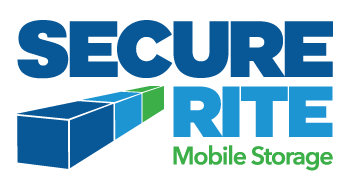
How to Prepare for a Local Emergency
This month the federal and provincial governments acknowledged emergency preparedness week across Canada in an effort to prepare Canadians for emergencies before they happen. In Western Canada we were encouraged to prepare for everything from avalanches, earthquakes and severe storms to tsunamis, wildfires and floods. However, it was also highlighted that emergency preparedness spans further than natural disasters to encompass power outages, pandemic influenza and chemical releases. No matter the state of emergency, there are things we can do to avoid suffering, minimize damage and recover as quickly as possible.
The first and most important thing we can do is learn about the risks in our communities. In British Columbia and Alberta, we are most at risk for flooding, wildfires and earthquakes, but the risks vary depending on region. By understanding when and where hazardous weather or events are likely to take place, we can learn the specific protocols to handle any emergency.
In the Okanagan we are at very high risk for wildfires. Emergency professionals recommend keeping your home clear of dried foliage and debris, always having a sprinkler onsite, making sure each level of your home has a smoke detector, and having an escape plan that all members of the household are familiar with.
Planning is an important part of being prepared and will provide clarity to you and your family on what is needed and where to go. As you may not be together when an emergency happens, making a plan will help guide you to a safe meeting place, inform you of emergency services such as accommodations, storage and transport, and ensure that your pets have safe refuge. As listed by Get Prepared, your emergency plan should include:
- Safe exits from home and neighbourhood
- Phone numbers and locations of emergency services
- Meeting places to reunite with family or roommates
- Designated person to pick up children should you be unavailable
- Contact persons close-by and out-of-town
- Health and insurance information
- Pet accommodation
- Risks in your region
- Location of fire extinguisher, water valve, electrical panel, gas valve and floor drain
Your plan should be easily accessible both electronically and in laminated print. Be sure everyone in your family or household knows where it is and has easy access to it.
In the event that professional help or refuge is unobtainable, the Government of Canada recommends that every household should be prepared to be without food, water or electricity for a minimumof 72 hours. It is vital that items are organized, easy to find and stored within a weather, water and rodentproof container such as a sea can or shipping container. This will help you avoid using wet or moldy supplies and consuming ‘broken into’ food. It is also wise to separate supplies into backpacks. This way, your kit will be easy to transport and each person can personalize his or her own grab-and-go emergency kit. Below is a list of the most basic necessities that should be included in your kit as outlined by Get Prepared:
- Water — two litres of water per person per day
- Food that won't spoil, such as canned food, energy bars and dried foods
- Manual can opener
- Wind-up or battery-powered flashlight and extra batteries
- Wind-up or battery-powered radio and extra batteries
- First aid kit
- Extra keys for your car and house
- Cash, travellers' cheques and change
- Important family documents such as identification, insurance and bank records
- Emergency plan — include a copy in your kit as well as contact information
We can’t prevent disasters from happening, but we can prepare in advance to deal with them properly. With wildfire season approaching, it is important to consider what emergency services are available and how to access them. Secure-Rite delivers weather and waterproof shipping containers within 24 hours to aid in times of urgent need. We can transport your belongings to one of our four locations in BC or Alberta to ensure they are stored safely and out of a hazardous area.
In the event of an extreme emergency where housing may not be attainable, Secure-Rite also specializes in building fully functional emergency shelters. Container shelters are durable, water and weatherproof, can be transported quickly, and when space is limited can be stacked on top of each other. In high-risk areas where disasters are common, having a fleet of deployable storage and shelter units provides communities with the resources they need to handle the most extreme circumstances quickly and efficiently.
To learn more about how to protect you and your belongings in a state of emergency, send us an email or call 250.861.3955.
Secure-Rite specializes in mobile storage, building solutions and custom design, utilizing one of the most durable structures in the world – shipping containers. We provide Western Canada with weatherproof and watertight sea cans for residential, industrial and commercial use. Whatever the need, Secure-Rite can provide simple, secure and smart solutions.

